Florida Land Mammals
Florida Panther, Florida Bobcat, Black Bear, Coyote, River Otter, Raccoon, Feral Pig, Gray Squirrel, Southern Fox Squirrel, Marsh Rabbit, Eastern Cottontail Rabbit, Nine-Banded Armadillo, White-tail Deer, Red Fox
Florida Bobcat - Lynx rufus floridanus
Bobcats are about twice the size of a domesticated cat, adult males can weigh up to 35-40 pounds with a body length up to 4 feet, females are slightly smaller, fur color is brown with black streaks/spots, belly is a lighter white-ish with black spots and the inside of the legs have black bars on them, the short tail is tipped with black, may have a collar or "ruff" of slightly longer hair around the neck.
Bobcats are crepuscular animals, being most active during the twilight hours of dawn and dusk, however they only sleep for a couple of hours at a time so it is not unusual to see a Bobcat during the daylight hours and during the winter months they become more active during the day in response to an influx of migratory birds that become a larger part of their diet. The bobcats preferred diet primarily consists of birds, rabbits, squirrels and other small rodents, however they are also opportunistic feeders also, eating small reptiles and amphibians or carcasses left by other predators.
Bobcats utilize all types of habitats including swamps, flatwoods, scrub, coastal, and urban areas, ranging 5-6 miles in the wild and 1-2 miles in urban environments, they prefer dense cover to hunt in and they are excellent swimmers and climbers. Breeding season is from August to March and is the only time that adults are seen together, dens and resting places are in dense thickets of palmetto or other vegetation, hollow logs or under rocks, kittens stay with the female until the following season.
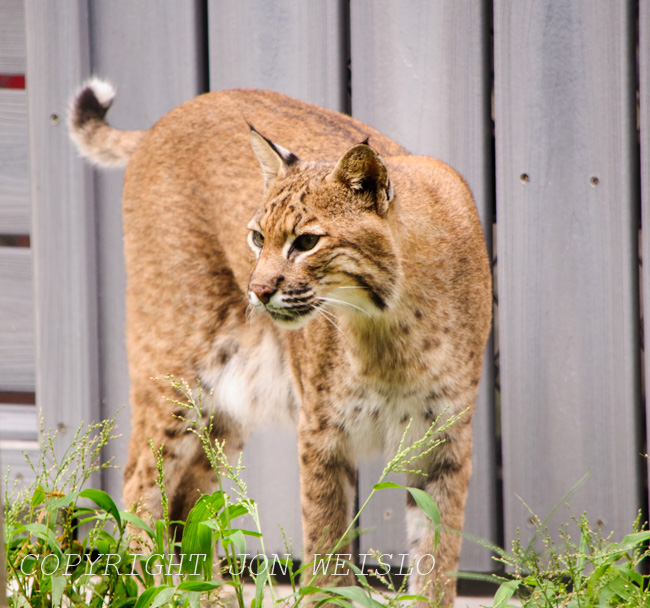
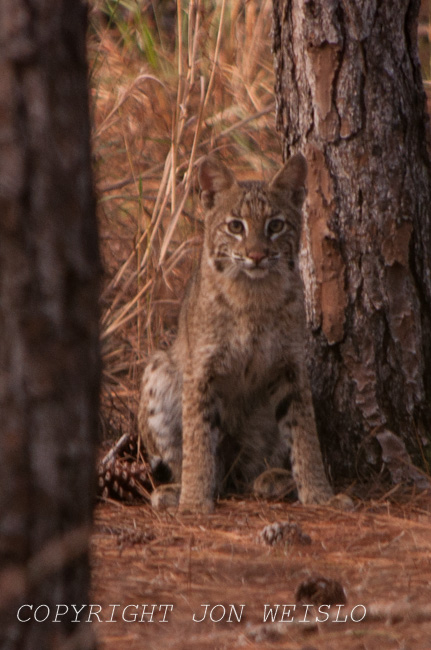
Florida Panther - Puma concolor coryi
☆The Florida State Animal☆
Common names include "cougar", "panther", "catamount" and "painter". At one time the Florida Panther, a sub-species of mountain lion, was common throughout Florida and into Arkansas, Louisiana and north to Georgia and S. Carolina. Hunted almost to extinction by the 1970's (in spite of a ban on hunting introduced in 1958) the population was estimated to be about 20 individuals. The Florida Panther has protected by the federal endangered species act since 1967 and the Florida endangered species list since 1973. Today, the estimated population ranges from 100-200 adults.
Because the population was so low in-breeding occurred resulting in physical deformities and a reduced overall survival rate, in 1995 six female panthers from Texas were released in South Florida in a successful bid to increase genetic diversity, these females produced about 20 kittens resulting in in a much healthier general population.
The biggest threat to the Florida Panther today is habitat loss and fragmentation through development. Florida Panthers currently rank as the most endangered mammal on the planet. Natural life expectancy in the wild is 10 - 20 years, color is tan to beige with dark markings on the tip of the tail, the ears and on the nose, underside is off- white/grey-ish, males average weight is 130 pounds and a height of 23 - 27 inches at the shoulder, with a length of 7 feet (including tail), females are slightly smaller averaging 75 pounds and 6 feet long.
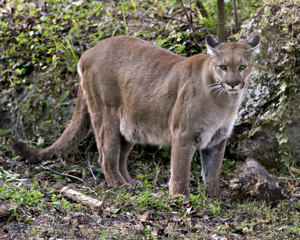
Male Florida Panthers have a range up to 200 + square miles, diet primarily consists of white-tail deer and feral hogs, and includes raccoons, armadillo, rabbits and birds. Although Florida panthers have been recorded in the panhandle and into Georgia and Alabama, today the breeding population is limited to S.W. Florida.
Black Bear - Ursus americanus
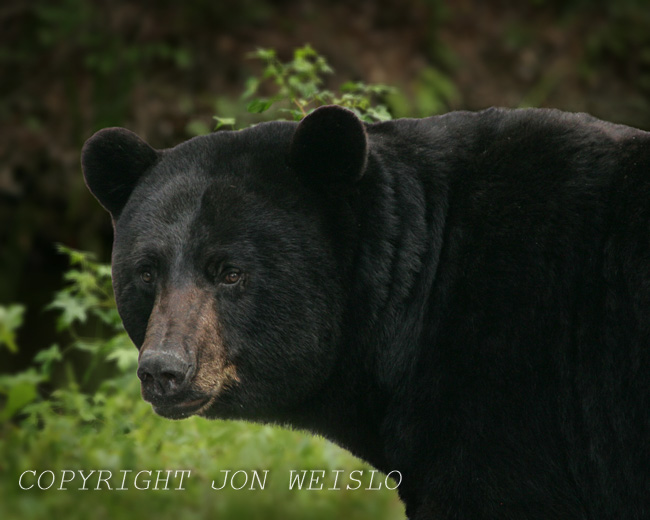
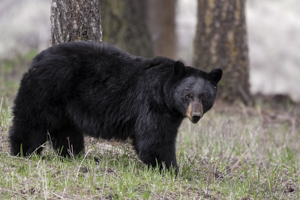
The F.W.C. (Florida Fish and Wildlife Conservation Commission) estimates an existing Black bear population of just over 4000 individuals within the state of Florida. Black bears are omnivores feeding mostly on berries, nuts, and fruit with meat making up only about 5 % of their diet. Males have a 60 square mile range, whereas females usually range about 15 square miles.
Average weights for adult bears in Florida range from 250 to 450 pounds for males and 125 to 250 pounds for females, the largest males recorded to date were 740 and 760 pounds in Seminole county. Black bears are the only species of bear found in Florida.
Coyote - Canis latrans

When we think of the Coyote we usually think of "out west", however coyotes have been documented in every county throughout the state of Florida. Coyotes live in urban and suburban locations as well as rural areas and are an important part of the natural landscape, they help to control rabbits and other rodents as well as raccoon, armadillo and fox populations.
The average adult coyote in Florida weighs 28 pounds with a coat that is tan to grey (may have brown or black mixed in), white throat and chest, large triangular ears with a long slender muzzle and a thick, bushy tail.
River Otter - Lontra canadensis

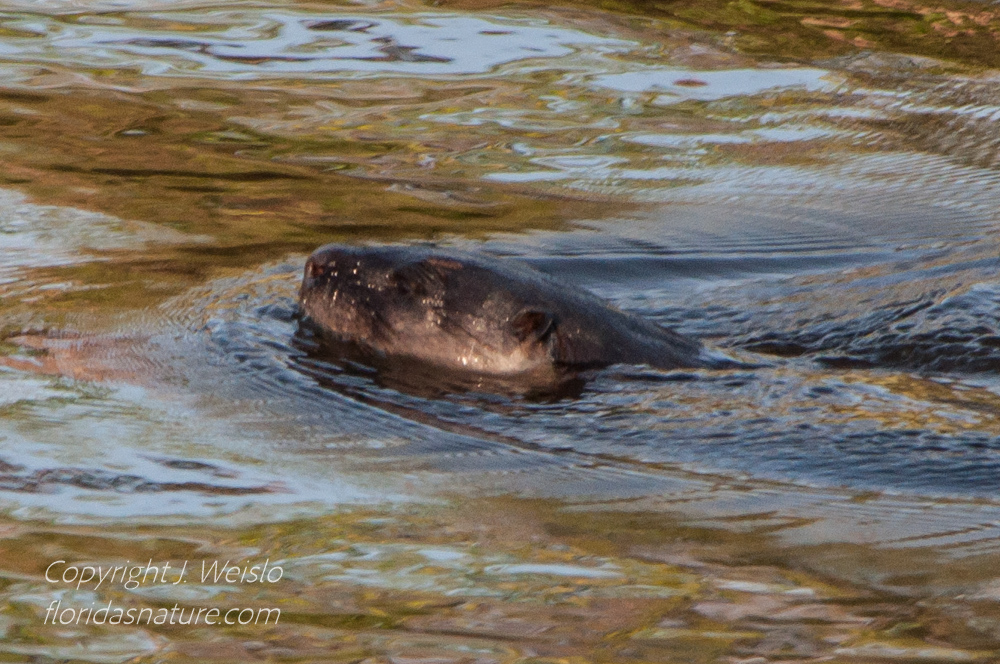

The North American river otter is endemic to the North American continent and inhabit most of Florida's waterways and coasts except for the Keys. Adult otters can weigh up to 30 pounds with a length of 50 inches. River otter have a thick, water-repellent coat of fur that ranges from light to dark brown in color. Like most predators, River otters are opportunistic feeders and fish, various amphibians, freshwater clams, mussels, snails, small turtles and crayfish are all on the otters menu - possibly a young bird or eggs if given the opportunity.
River otters make a burrow or use an abandoned burrow or den another animal has made. In Florida a den may be made in dense vegetation or under fallen trees or tree roots at the waters edge. Otters habitat include freshwater marshes, creeks, ponds and rivers, and although otters are always nearby water they do rest on land when they are not hunting. Otters breed once a year and a litter is usually 2-3 young, they stay around their mother for about a year.
Raccoon - Procyon lotor
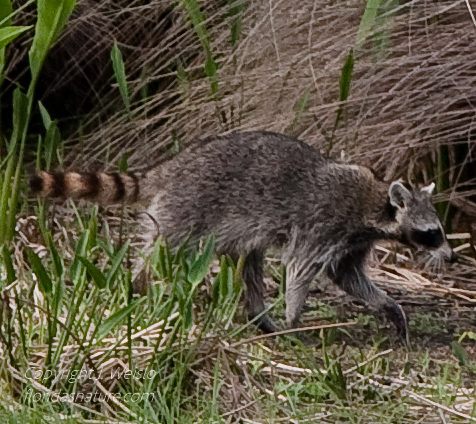

Referred to as the "water bear" in some cultures, the Raccoon is widespread in the Americas with several sub-species present. The common raccoon or more simply "coon" is 16-28 inches long and weighs 8 - 20 pounds. They are nocturnal by nature but do occasionally venture out in the daylight hours, they are omnivores with about 70 percent of their diet being meat and 30 percent plant matter.
Raccoons are noted for their dexterity with their front paws, even being able to untie knots! They are also very adaptable to urban environments, becoming a nuisance in some cases. Raccoons will raid garbage cans, eat pet food left out and may even take up residence in your attic. Raccoons give birth to 2 - 5 young called "kits" in spring, the young stay around their mother until the following fall.
A few rabid Raccoons show up in Florida every year, so be advised to leave them alone.
Feral pig - Sus scrofa
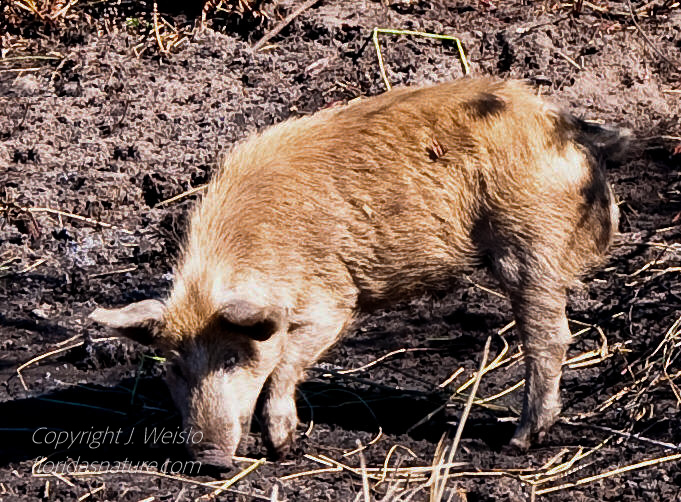
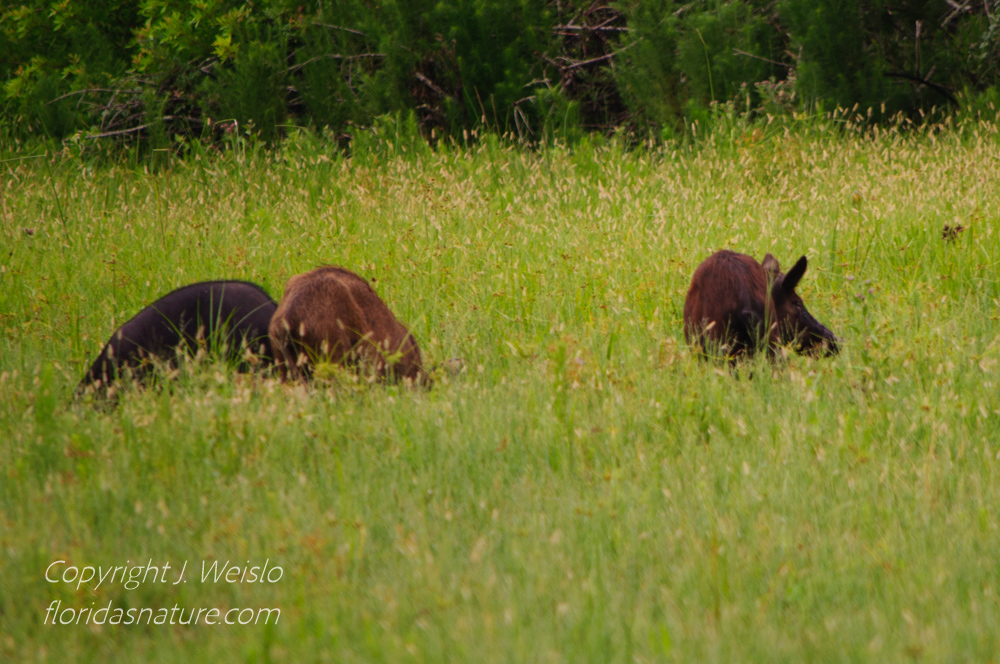
Also called wild hogs, boars. The feral pigs that inhabit Florida first arrived with the Spanish explorers and early colonists that brought them as a food source, some were intentionally released, others escaped captivity
Feral hogs can be found almost everywhere close to water and frequent areas around marshes, swamps, and wet flat woods. They can can do considerable damage with their rooting, estimated to cause over 2.5 billion dollars in damage to agriculture annually. Diet consists of everything from insects, berries, nuts, and roots to frogs and snakes.

Wild swine carry more than 24 diseases that are transmissible to humans or livestock, can be aggressive and run up to 30 miles an hour, they have razor sharp tusks and weigh up to 250 pounds (or more), sows with piglets are especially dangerous - avoiding them is wise.
Nine-banded Armadillo - Dasypus novemcinctus

The nine-banded armadillo is named for the nine joints (bands) that allow it to flex its bony shell-like covering on its back, they also have this covering on the front of their legs. Armadillos average 17 inches long (minus the tail) and weigh approximately 17 pounds when mature. An armadillos front feet have two elongated middle claws for digging. Armadillos dig burrows as much as seven feet deep and up to twenty feet long, and a single animal may have nearly a dozen burrows across its home range. These burrows are a safe haven from predators, Eagles, Hawks, Owls, Panthers, Bobcats, and Alligators prey upon armadillos.
Native to the southwest U.S., the nine-banded armadillo was introduced to Florida as far back as the 1920s and is now considered to be naturalized in Florida. They prefer wooded habitats with loosely packed soil, diet includes insects, grubs, beetles, worms and other small invertebrates.
Armadillo's usually give birth to four identical "pups" that stay with the mother for about 3 months, they are primarily a nocturnal animal but because an armadillo has very little body fat and a thin uninsulated "shell" they are not able to regulate body temperature as well as most mammals, for this reason they are more active at night when its cooler in the summer. In the winter they are more likely to be active during the warmer daylight hours. Armadillo's are able to jump 3-4 feet straight up when frightened, and are also known to carry leprosy.
Grey Squirrel - Sciurus carolinensis
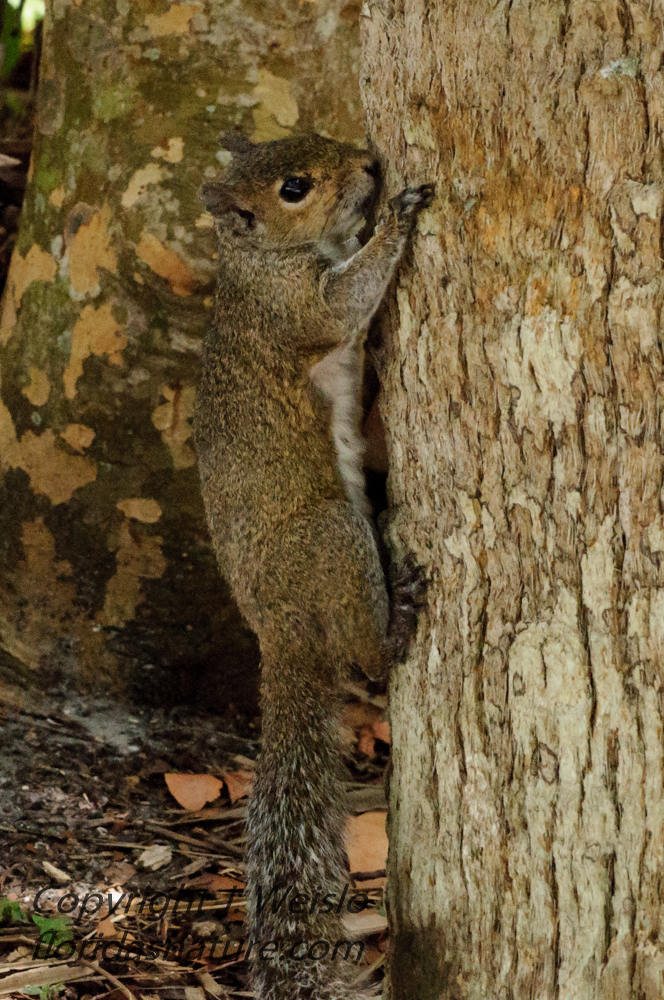
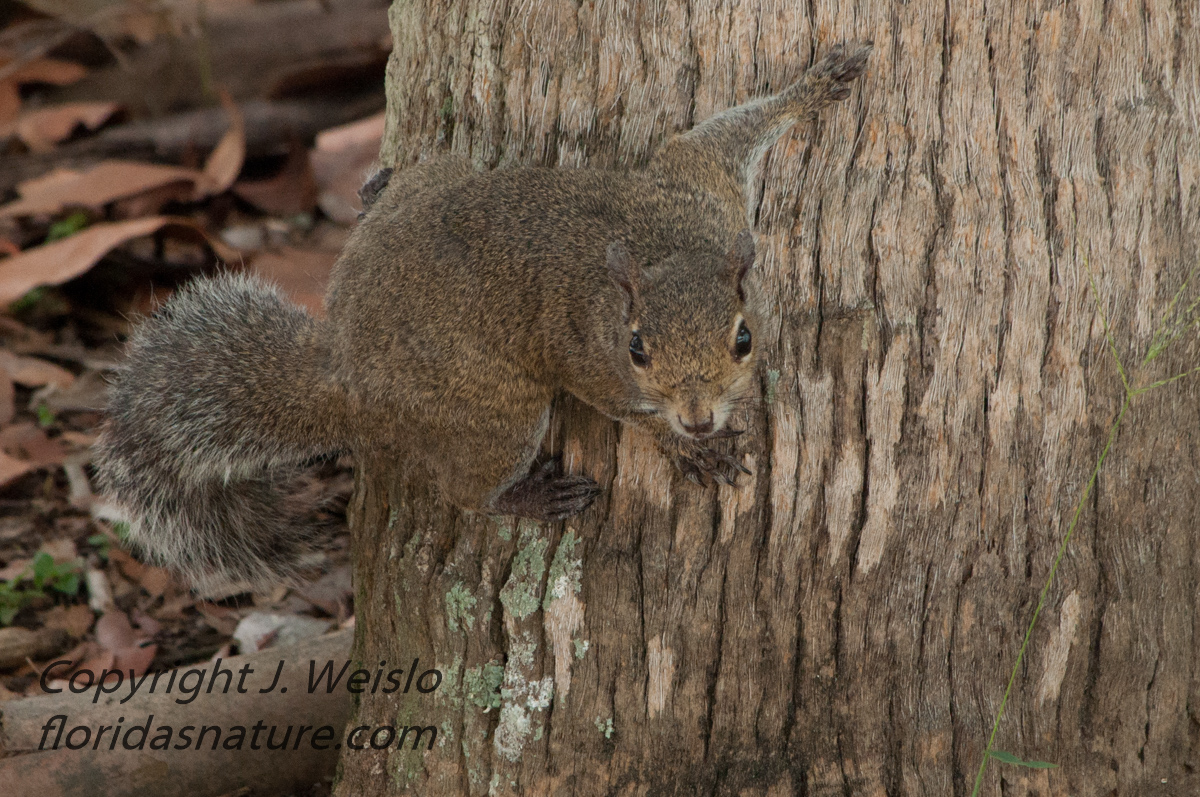
The Grey Squirrel is a small to medium sized rodent native to the eastern United States including Florida, color is pale/dark gray with cinnamon/tan tones, its tail is salt and pepper white to pale gray, underparts are pale gray to buff.
Natural habitat is mature forest with pine, oak, hickory or other nut producing trees with an under story of shrubs and herbs/forbs. Squirrels will eat nuts, , fruits, seeds, insects, fungi, eggs, and have been known to be cannibalistic. Squirrels do bury food and later locate it through a combination of memory and smell.
Gray squirrel breed twice a year and produce 2-4 young at each litter, the young are weaned at 7-10 weeks and are able to reproduce as young as 5.5 months, generally becoming sexually mature at about a year. Nests are made in hollow trees or constructed from leaves and twigs 35-45 feet up in tree branches.
Squirrels are a prey item on many predators menu including eagles, hawks, foxes, minks, bobcats, panthers, coyotes and of course - humans.
Southern Fox Squirrel - Sciurus niger niger

The Southern fox squirrel weighs from one to three pounds, and is up to 27 1/2 inches long, color ranges from a buff color to gray, occasionally black. Usually lighter on the under parts, with white noses and ears with a black face and feet. Long bushy tails and strong hind legs.
The diet of Southern fox squirrel primarily consists of pine seeds and acorns, but they will also eat fungi, fruit, and flower buds. Southern fox squirrels are found in open longleaf pine, turkey oak, sandhill, and flatwoods habitats.
Marsh rabbit - Sylvilagus palustris

The marsh rabbit has dark brown fur, short rounded ears and a small gray-brown tail that quickly distinguishes it from the slightly larger Eastern cottontail rabbit.
Marsh rabbits are semi-aquatic and are good swimmers, habitats include marshes, swamps, and wet prairies. Marsh rabbit diet consists of a variety of wetland plants such as marsh grasses, duck potato, cattails, marsh penny-wort and water hyacinths They are most active at night and twilight hours. During the day they stay hidden in dens in dense grass or vegetation, their shallow nest or scrape is lined with grass, leaves and fur.
Preyed upon by eagles, hawks, owls and bobcats, they are also a prime food source for the eastern diamondback rattlesnake and water moccasin. Breeding goes on year round with up to 4 litters per year, each litter producing 2-4 young or "kits".
Eastern Cottontail - Sylvilagus floridanus
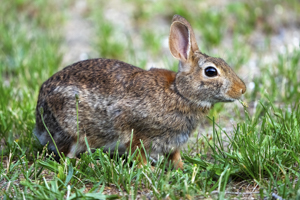

The eastern cottontail rabbit is most easily distinguished from its close relative, the marsh rabbit by having its namesake white fluffy tail or "cottontail". In Florida their adult weight is 2 - 2 1/4 pounds, whereas in their more northern part of their range this average weight increases slightly, body length is 14 - 19 inches.
Eastern cottontails are generally crepuscular to nocturnal feeders, usually spending most of the daylight hours resting in a scrape, or shallow depression under the cover of shrubs, although they may be seen at any time of day.
Preferred habitat for the eastern cottontail is dry, grassy prairie, pastureland and open forest with plenty of thick vegetation nearby for protection/cover from predators. Diet consists of grasses, sedges, herbs and forbs, young shoots, twigs and bark from various low growing shrubs.
White-tailed Deer - Odocoileus virginianus
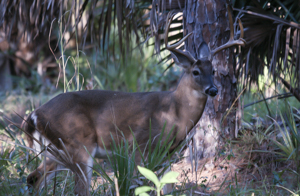
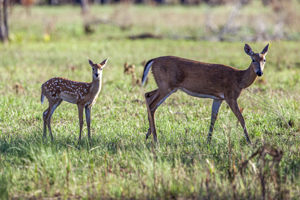
Varying in size depending on their local habitat and the quality of available forage adult male deer average 115 pounds statewide, females average around 90 pounds. In North Florida where the deer grow larger because of more abundant food sources males weigh closer to 200 pounds, females around 120 pounds. White-tailed deer are found throughout Florida from the panhandle to the keys
White-tailed deer prefer habitats with young, low-growing vegetation that provide good forage while also allowing a clear view of any approaching predators.
Most active at dawn and dusk, White-tailed deer browse on the leaves, shoots, flowers and fruits of trees, shrubs, and other tender vegetation.
When the deer are alarmed, they hold their tail up and wave it back and forth like a flag as a warning to other nearby deer hence the name - White-tailed deer. Deer will sometimes stomp a foot and snort before running away.
White-tailed deer are crepuscular - meaning they are most active at dawn and dusk during the twilight hours.
The Key deer (Odocoileus virginianus clavium) average 27 inches at the shoulders and 80 pounds.
Red Fox - Vulpes vulpes

Adult Red foxes weigh 10 - 15 pounds and are about 2 feet long not including the tail, they are reddish to golden brown above and have a white belly, chest and chin, the tail is usually tipped with white. Mainly nocturnal, they may be seen hunting in the early morning or at dusk.
Red fox preferred habitat type is upland fields and prairie, generally avoiding thickly forested areas. Dens are 3 -4 feet deep and as much as 40 feet long with multiple entrances. Red foxes may also use gopher tortoise or armadillo burrow, enlarging them to suit their needs.
Diet consists primarily of rabbits, rats and mice. Usually mating for life, breeding is in late fall / early winter averaging 5 pups per litter, pups stay with the parents for about 6 months.